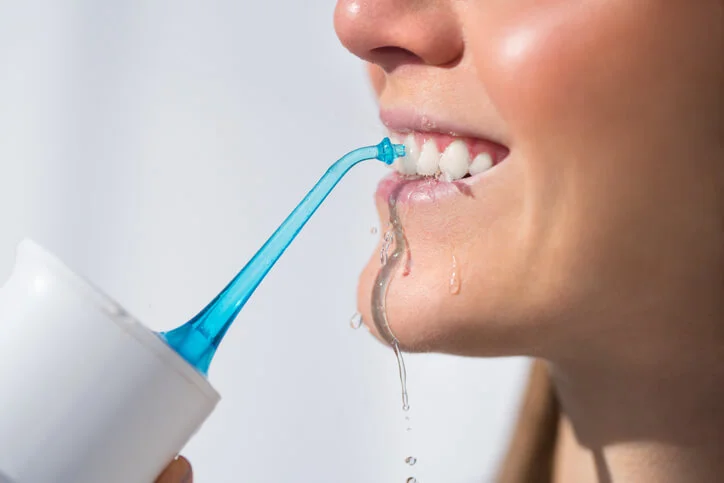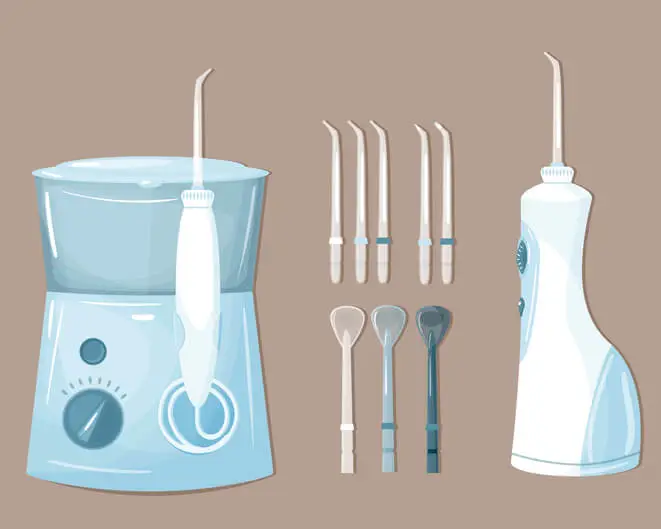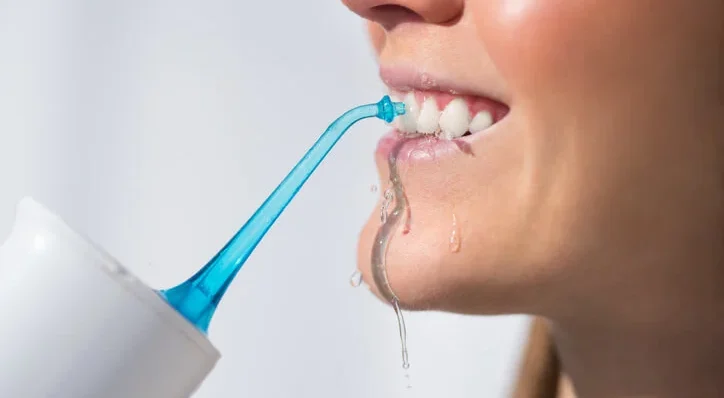Oral hygiene is a cornerstone of overall health, and the pursuit of better dental care tools has led to significant advancements over the years. Among these innovations, water flossers have emerged as a popular alternative to traditional string floss. Known for their ease of use and effectiveness, water flossers have gained widespread acceptance from both dental professionals and the general public. This article aims to provide a comprehensive guide to water flosser, covering their benefits, how to use them, and key considerations for choosing the right one.

Table of Contents
ToggleWhat is a Water Flosser?
A water flosser, also known as an oral irrigator, is a dental device designed to clean between teeth and along the gumline using a jet of water. Unlike traditional string floss, which relies on mechanical action to remove plaque and debris, water flossers use pressurized streams of water to dislodge particles and clean the oral cavity. These devices typically consist of a water reservoir, a motorized pump, and a specialized nozzle that directs the water flow.
The Evolution of Water Flosser
Water flossers were first introduced in the early 1960s by dentist Gerald Moyer and engineer John Mattingly. Since then, they have undergone numerous improvements in terms of design, functionality, and efficiency. Modern water flossers come with adjustable pressure settings, various nozzle types, and advanced features like pulsating water streams to enhance cleaning efficacy.

Benefits of Using a Water Flosser
- Enhanced Cleaning Efficiency
- Improved Gum Health
- User-Friendly
- Suitable for Orthodontic Patients
- Time-Efficient
- Reduces Bad Breath
Enhanced Cleaning Efficiency
Water flossers are highly effective at removing plaque and food particles from areas that traditional floss may struggle to reach. The pressurized water can penetrate deep between teeth and below the gumline, providing a thorough clean.
Improved Gum Health
Regular use of a water flosser can significantly reduce the risk of gum disease. The massaging action of the water stream stimulates blood circulation in the gums, promoting healthier tissues and reducing inflammation.
User-Friendly
Many people find water flossers easier and more comfortable to use than traditional floss. This is especially true for individuals with braces, dental implants, or sensitive gums, where string floss can be challenging or painful to use.
Suitable for Orthodontic Patients
Water flossers are particularly beneficial for people with braces and other orthodontic appliances. The water jet can clean around brackets and wires, areas that are often difficult to clean thoroughly with traditional floss.
Time-Efficient
Using a water flosser can save time compared to traditional flossing. The process is quick and efficient, making it easier for individuals to maintain a consistent oral hygiene routine.
Reduces Bad Breath
By effectively removing food particles and plaque, water flossers help reduce the occurrence of bad breath, promoting fresher breath and overall oral hygiene.
How to Use a Water Flosser
Using a water flosser is straightforward, but it’s important to follow proper steps to maximize its effectiveness:
- Fill the Reservoir
- Select the Appropriate Tip
- Adjust the Pressure
- Position the Nozzle
- Start Flossing
- Empty the Reservoir
Fill the Reservoir
Fill the water flosser’s reservoir with lukewarm water. Some models also allow the addition of mouthwash for enhanced cleaning.
Select the Appropriate Tip
Choose the appropriate nozzle tip for your needs. Standard tips are suitable for general use, while specialized tips are available for orthodontic appliances, periodontal pockets, and implants.
Adjust the Pressure
Set the water pressure to a comfortable level. Beginners should start with the lowest setting and gradually increase the pressure as they become accustomed to the sensation.
Position the Nozzle
Lean over the sink and place the nozzle in your mouth. Close your lips slightly to prevent water from splashing, but allow the water to flow freely into the sink.
Start Flossing
Turn on the device and direct the water stream at a 90-degree angle to your gumline. Move systematically from one tooth to the next, ensuring you cover all areas, including the front, back, and between the teeth.
Empty the Reservoir
Once you’ve finished flossing, turn off the device and empty any remaining water from the reservoir. Clean the nozzle and store the device according to the manufacturer’s instructions.
Key Considerations When Choosing a Water Flosser
- Pressure Settings
- Reservoir Capacity
- Nozzle Variety
- Portability
- Battery Life
- Ease of Use
- Noise Level
Pressure Settings
Look for a water flosser with adjustable pressure settings. This feature allows you to customize the intensity of the water jet to suit your comfort level and cleaning needs.
Reservoir Capacity
The size of the water reservoir determines how long you can use the device before needing to refill it. Larger reservoirs are convenient for extended use, while smaller ones may be more compact and portable.
Nozzle Variety
Different nozzles are designed for specific purposes. Standard nozzles are ideal for general cleaning, while orthodontic tips, periodontal tips, and plaque seeker tips cater to specialized needs.
Portability
If you travel frequently, consider a compact and portable water flosser. Some models are designed for easy packing and come with travel cases.
Battery Life
For cordless water flossers, battery life is an important factor. Choose a model with a long-lasting battery to ensure uninterrupted use between charges.
Ease of Use
Opt for a water flosser with intuitive controls and a user-friendly design. This ensures a hassle-free experience, especially for first-time users.
Noise Level
Some water flossers can be quite noisy. If you prefer a quieter operation, look for models specifically designed to minimize noise.
Comparing Water Flossers to Traditional Floss
While both water flossers and traditional floss serve the same fundamental purpose of cleaning between teeth and along the gumline, they differ in several key aspects:
- Method of Cleaning
- Ease of Use
- Effectiveness
- Comfort
- Time Efficiency
Method of Cleaning
Traditional floss relies on mechanical action to scrape off plaque and debris, while water flossers use a jet of water to dislodge particles and clean the oral cavity.
Ease of Use
Many people find water flossers easier to use, particularly those with limited dexterity, orthodontic appliances, or sensitive gums. Traditional floss requires a certain level of manual dexterity and can be difficult to maneuver around braces and other dental work.
Effectiveness
Studies have shown that water flossers can be more effective at reducing plaque and improving gum health compared to traditional floss. The water jet can reach areas that string floss might miss, such as periodontal pockets and tight spaces between teeth.
Comfort
Water flossers are generally more comfortable to use, especially for individuals with sensitive gums. The gentle water stream is less likely to cause irritation or bleeding compared to the mechanical action of string floss.
Time Efficiency
Using a water flosser can be quicker than traditional flossing. The process is straightforward and can cover more surface area in less time.
Scientific Evidence and Dental Professional Recommendations
Numerous studies have evaluated the efficacy of water flossers in improving oral health. Research published in the Journal of Clinical Dentistry found that water flossers can reduce gingivitis and plaque more effectively than traditional floss. Another study in the American Journal of Orthodontics and Dentofacial Orthopedics highlighted the benefits of water flossers for orthodontic patients, showing significant reductions in plaque and gingival bleeding.
Many dental professionals recommend water flossers as a complement to traditional oral hygiene practices. They emphasize that while water flossers can enhance cleaning, they should not completely replace traditional flossing for everyone. Instead, a combination of both methods can provide optimal results.
Tips for Maximizing the Benefits of a Water Flosser
- Use Regularly
- Combine with Other Oral Hygiene Practices
- Replace Nozzles Periodically
- Maintain the Device
- Follow Professional Advice
Use Regularly
Consistency is key to reaping the benefits of a water flosser. Aim to use it at least once daily as part of your oral hygiene routine.
Combine with Other Oral Hygiene Practices
Incorporate water flossing with regular brushing and traditional flossing (if recommended by your dentist) for comprehensive oral care.
Replace Nozzles Periodically
Over time, nozzles can wear out or become less effective. Follow the manufacturer’s recommendations for nozzle replacement to ensure optimal performance.
Maintain the Device
Regularly clean the water reservoir and nozzle to prevent the buildup of bacteria and ensure the device functions properly.
Follow Professional Advice
Consult your dentist or dental hygienist for personalized advice on using a water flosser, especially if you have specific dental conditions or appliances.
Frequently Asked Questions (FAQs)
Do dentists recommend water flossers?
Yes, many dentists recommend water flossers, particularly for individuals who find traditional flossing difficult or ineffective. Water flossers are especially beneficial for people with braces, dental implants, or gum disease, as they help remove plaque and food debris from hard-to-reach areas. While they may not entirely replace traditional flossing, they can be a useful supplement to improve oral hygiene and gum health.
Is a water flosser as good as flossing?
Water flossers can be just as effective as traditional flossing in removing plaque and reducing gingivitis, but they work differently. While string floss physically scrapes plaque and debris off the tooth surfaces and between teeth, a water flosser uses a jet of pulsating water to flush out particles and bacteria. For some people, especially those with dental appliances or sensitive gums, a water flosser may be more comfortable and practical. However, for best results, dentists often recommend using both methods together.
Is a water flosser good for teeth?
Yes, using a water flosser can be highly beneficial for maintaining good oral health. Water flossers can help remove plaque, prevent gum disease, and reduce the risk of cavities by cleaning areas that brushing alone may not reach. They are particularly helpful for people with gum recession, braces, or bridges, as they can clean thoroughly without causing irritation or damage to dental work. Additionally, they improve gum circulation, promoting overall oral health.
Are water flossers good for NHS patients?
Water flossers can be beneficial for individuals receiving NHS dental care, particularly for those who struggle with traditional flossing due to mobility issues, gum disease, or orthodontic appliances. However, they are not typically provided by the NHS for free. Patients may need to purchase their own water flosser, but many UK dentists recognize them as a helpful tool for maintaining oral hygiene.
What is the disadvantage of a water flosser?
Despite their benefits, water flossers have some drawbacks, including:
- Higher Cost: They are more expensive than traditional string floss, with prices varying depending on the model and features.
- Messiness: Water flossers can create splashing, requiring users to be cautious when using them, especially over a sink.
- Electricity or Batteries Needed: Some models require an electrical outlet or battery charging, which may not be convenient for travel or small bathrooms.
- Not as Precise for Tightly Spaced Teeth: Water flossers may not clean as effectively in extremely tight spaces compared to traditional floss.
Do dentists recommend water flossers in the UK?
Yes, many UK dentists recommend water flossers, particularly for individuals who have difficulty using traditional floss. They are especially advised for people with:
- Braces or orthodontic work – to help clean around wires and brackets.
- Gum disease (gingivitis or periodontitis) – to reduce inflammation and remove bacteria from gum pockets.
- Dental implants, bridges, or crowns – to prevent plaque buildup around restorations.
- Arthritis or dexterity issues – as they provide an easier and more comfortable way to clean between teeth.
Do water flossers remove tartar?
Water flossers are effective at removing plaque and food debris, but they do not remove tartar (hardened plaque). Tartar forms when plaque is left on the teeth for an extended period and calcifies, requiring professional removal by a dentist or hygienist. However, using a water flosser regularly can help prevent tartar buildup by keeping teeth cleaner between dental visits.
Can you use tap water in a water flosser?
Yes, you can use tap water in a water flosser, and for most people, it works just fine. However, in areas with hard water, mineral deposits can build up inside the device over time, potentially affecting its performance. To avoid this, some users prefer to use filtered or distilled water. It is also recommended to clean the water flosser regularly to prevent bacterial growth.
What is the difference between a Waterpik and a water flosser?
A Waterpik is a brand of water flosser, while “water flosser” is a general term for any device that uses a stream of water to clean between teeth. Waterpik is one of the most well-known and widely used brands, but there are many other brands available, such as Philips Sonicare, Oral-B, and Panasonic, that offer similar devices with different features and price points.
Waterpik models often come with multiple pressure settings, interchangeable nozzles, and advanced pulsation technology, making them a popular choice among dentists and consumers.
Conclusion
Water flossers represent a significant advancement in dental care technology, offering an effective, user-friendly alternative to traditional floss. Their ability to enhance cleaning efficiency, improve gum health, and accommodate various dental needs makes them a valuable addition to any oral hygiene routine. By understanding the benefits, proper usage, and key considerations when choosing a water flosser, individuals can make informed decisions to achieve better oral health. As always, consulting with dental professionals and maintaining consistent oral hygiene practices will ensure the best outcomes for your dental care journey.

